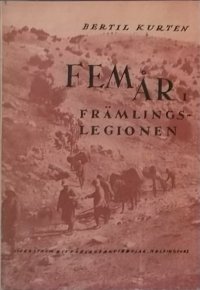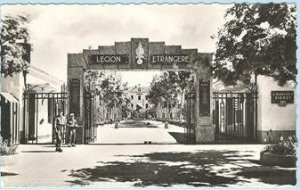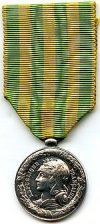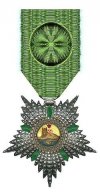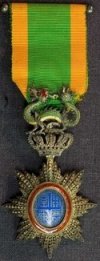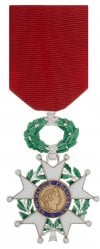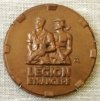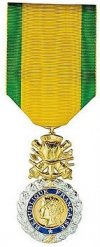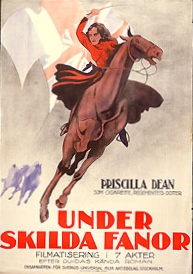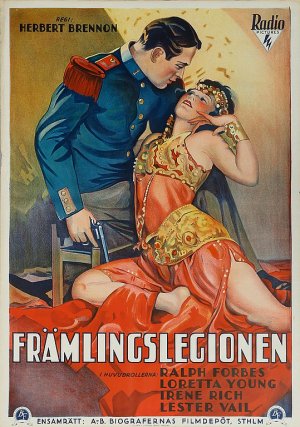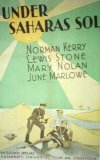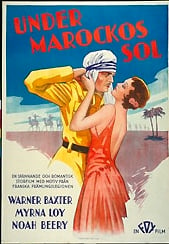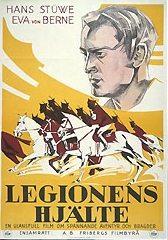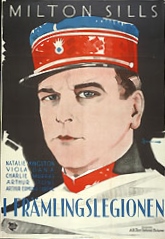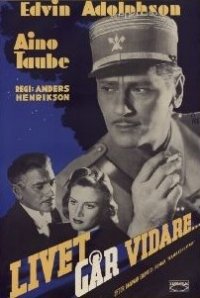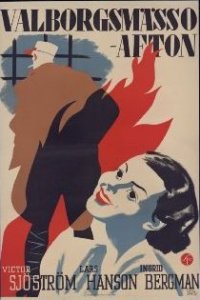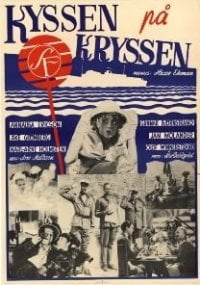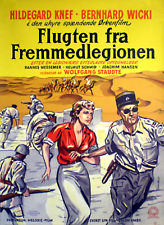English
Främlingslegionen. |
Foreign Legion |
Légion étrangère |
Update Januar 1, 2020. Nothing new
The translation is probably not the very best, but will hopefully be understandable to most people, who do not understand Swedish.
 Here is a brief summary in English
Here is a brief summary in English
Welcome to my page. Here I have gathered information from my collection of books and the internet, which I hope will be a fairly comprehensive "dictionary" for those who want to dig deeper into the subject, "The French Foreign Legion. Swedes and in Swedish"
Comments and additional information are gratefully received in my GUESTBOOK
SWEDISH LEGIONNAIRES:
Edgar Paul Andersson (1895-1990)
In the Legion: 1914-1916 and 1921-1927
Born in Svartsjö. Gave out into the world as a seaman in 1911. Referred to the First World War to the French Foreign Legion special forces, which only needed to commit during the war. After nearly two years, he was discharge account of sickness. Fought then for English troops. After the war he became Legionnaire in North Africa for 6 years. Participated 7 months in the Spanish Civil War in 1938.
Books only in Swedish:
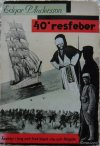
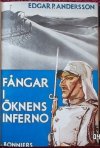 40° resfeber. Äventyr i krig och fred bland svarta och vita. 237 p.
40° resfeber. Äventyr i krig och fred bland svarta och vita. 237 p.
Bonniers 1933, 1938.
Fångar i öknens inferno. Ett år i främlingslegionens straffängelse. 196 p.
Bonniers 1934
Dick Beer (1893-1938)
In the Legion 1914-16
Swedish artist, like his father, John Beer ( 1853-1906 ) . Born in England, he comes to Sweden in 1907 as an orphan and having been housed with relatives he has a permanent residence in Västergötland. Dick Beer who at an early age was influenced by Paris crucible change studies at the Academy in Stockholm in 1912 against the French capital and rent out a studio near Montparnasse. When the First World War is upon enrolling Dick Beer like so many other artists who recruits for the French Foreign Legion and adopted. He claims to be from Switzerland and announces the name Herman Beer , as the French army would never have accepted his English background. Postwar becomes crucial in many ways for Dick Beers life and oeuvre. 1915 he damaged hard by a grenade attack, with severe deafness and nervous disorders to varying degrees will follow him through life. He continued in the war and then as an ambulance driver until the end of 1916.
Lars Jesper Benzelstierna (1809-1880)
In the Legion 1831-1835, perhaps the first Swedish Foreign Legion creditor.
1831: Benzelstierna enrolled himself, received training and participated in an adventurous journey down the Rhone in August 1831 to be shipped on to North Africa. Five years he spent in the Legion. During several campaigns against rebellious bedouins and kabyl tribes he advanced from private soldier to sergeant major "by an equally valiant as exemplary behavior," as Aftonbladet (a Swedish newspaper) wrote.
Book only in Swedish:
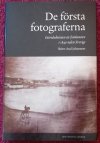 "De första fotograferna" (Only in Swedish), a book by Björn Axel Johansson. "The first photographs". Contains the chapter "The Swedish desert warrior" on Benzelstiernas period, 1831-1835, in the French Foreign Legion.
"De första fotograferna" (Only in Swedish), a book by Björn Axel Johansson. "The first photographs". Contains the chapter "The Swedish desert warrior" on Benzelstiernas period, 1831-1835, in the French Foreign Legion.
Wilhelm Boberg
In the Legion in the 1933-39. Morocco and Syria.
During the years of crisis in Sweden in the 1930s worked Wilhelm Severin Boberg in the restaurant business, but it was difficult to find work so he traveled to France, where it proved to be just as difficult. He came in contact with foreign legion recruiting agents and the choice was easy. After training, he came to Algeria at the border of Morocco, where he stayed for three years. Was at his own request transferred to Syria. Due to financial reasons, he was forced to extend his contract by one year and came back to Sweden after 6 years in the Legion.
He wrote a short story:
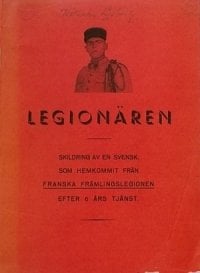 "Legionären: Skildring av en svensk, som hemkommit från Franska främlingslegionen efter 6 års tjänst" (Only in Swedish).
"Legionären: Skildring av en svensk, som hemkommit från Franska främlingslegionen efter 6 års tjänst" (Only in Swedish).
The Legionnaire: Depiction of a Swede, who had come home from the French Foreign Legion after 6 years of service. 30 pages.
Södertälje Tryckcentral 1939.
"Johan" Felldihnj (1844-1886)
In the Legion: 1874-1879
His time in the Legion was not quite as glorious as it emerged from his own stories. After four times in jail for drunkenness, he had been discharged. In other words, a sad end.
Curt Lennart Fjellström (1949-1972)
In the Legion: 1968-1970. Deserted.
With a self-made passport helped the Swedish diplomat Henry R Leo in 1970 a 20 year old man to escape from the Legion after the young Swede participate in the Legion warfare in Chad in Africa. Escape was possible since a secret contact of Leo handed civilian clothes, the new passport and plane tickets to 20-year-old Fjellström on an inconspicuous spot next to a park.
Shortly afterward slipped the fleeing Swede into a public toilet where he changed Legionnaire's uniform for civilian clothes. Then he boarded a train that took him across the border to Italy and from there by plane to Sweden.
Henry R Leo had just put a claim on the fleeing legionary - not a peep about how the flight went to the Swedish journalists. For if history become public had Consul General Leo very likely done his in the diplomatic corps.
Sergeant Curt Lennart Fjellström died in an accident in 1972 during the UN service UNFICYP in Cyprus.
Harry William Forsberg
(16/4 1915-10/10 1992)
In the Legion: 1936-1945. Born in Ljusne in Hälsingland.
Enlisted in La Légion Étrangère in October 1936, took part in bloody battles with North African Bedouin tribes, fought against Rommel's troops in North Africa, participated in the Allied invasion of Sicily and Italy and was captured by the Germans during the fierce fighting at Monte Cassino summer of 1943 and sat over two years in Italian and German prisoner of war camp, which was liberated by allied paratroopers in April 1945. Before Harry was captured, he received six medals for bravery. After the war he came home to Sweden on Sunday 5 August 1945.
Books only in Swedish:
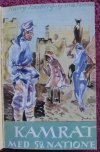
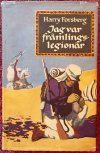 Kamrat med 52 nationer. 286 p.
Kamrat med 52 nationer. 286 p.
Hökerbergs 1946
Jag var främlingslegionär.285 p.
FIB 1953
Sven Forssell (1914-1962)
In the Legion: 1947-? Born Sven Gustaf Eriksson Forssell
Enlisted in the Legion under the name of John Johnson May 16, 1947 and the reason was, as he wrote in a series of articles in Lektyr No 1-6 1953: "It was not the spirit of adventure that drove me to Bas Fort Nicholas Foreign Legion European main depot in Marseilles. Nor desire for war, awards promotion, honor and spectacle. It was indifference, perhaps cowardice. I had played false and was finished with life. Behind me: shame, humiliation, and in front of me: nothing, an empty darkness. In the Foreign Legion, I would get help to put an end to my miserable life." What had happened in Sweden is not clear. It seems that he was only in the Legion for a short time in 1947 before he was helped to desert. I have not # 6 of Lektyr that is probably the last in the series of stories where the resolution is.
Book only in Swedish:
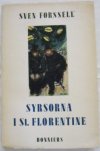 Syrsorna i St. Florentine. Short stories. 151 p.
Syrsorna i St. Florentine. Short stories. 151 p.
Bonniers 1948
Per Tycko Granberg (1908-1945)
In the Legion 1929-1945
Enlisted same time as Gösta Valdemar Jönsson and Assar Tano. After Narvik in 1940 he took service in de Gaulle's Free French troops and was killed in Germany.
Peter Hassel
(Pseudonym)
In the Legion around 1990. Chad och Kuwait
Book in swedish:
Anders Carlén, Mattias Falk
Svenskar i strid – Veteranernas Historier 1943 – 2011. 315 p.
Bonniers 2012
An example of a man with bitter experiences, Peter Hassel. After problems to fit into Swedish society he seeks to the French Foreign Legion as it is considered the toughest in the world. After a very tough selection, he may carry the prestigious beret and thrown out in the field. He is sent to African Chad teeming with violence and postcolonial concerns. His life as a mercenary becomes very violent and he begins to take cannabis to calm his nerves. When Iraq invades Kuwait in 1990 he was sent there to go from house to house systematically clear out Iraqi soldiers. In retrospect realizes Hassel that he has only been an expendable tool of American interests, and that even the Foreign Legion is based on lies about brotherhood and honor.
Maths Holmström (1879-1947)
Fought in Africa 1921-22 on the French side. Doubtful if it was in the Legion.
Knut Edwin Häll (5/2 1914-26/5 2000)
In the Legion 25 June 1935 to 1941. Born in Helsingborg, died in Härnösand.
Knut E. Häll was an adventurous young Swedish who happen to end up in Legion in the 1930s. When he was 18, he wandered through Europe. Suspected as a German spy in Czechoslovakia, but survived the execution, witnessed attacks against the King of Yugoslavia and ended up in jail. Beaten by SA-men and was rescued by none other than Hermann Goering. Then he was arrested by the Gestapo and deported to France. To enter France, he was forced to sign a paper, which applied everyone that was expelled from Germany, to enter. He could not speak French, but it turned out to be a contract with the French Foreign Legion ... After his return to Sweden, he was among other stationed on German permittent train. During his later life he worked as an inventor.
Book only in Swedish:
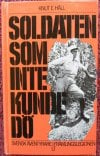 Soldaten som inte kunde dö. Svensk äventyrare i Främlingslegionen. 312 p.
Soldaten som inte kunde dö. Svensk äventyrare i Främlingslegionen. 312 p.
LTs Förlag 1987
Gösta Valdemar Jönsson (21/8 1907-2003)
In the Legion 1929-1934
Gösta Valdemar Jönsson born in Trulstorp in central Skåne in 1907, became herring fishermen, fifteen years old and enrolled in the Crown Prince's Hussar Regiment in 1924. Became Corporal at the Royal Northern Sweden Dragon regiment, but became unemployed after regimental closures 1927. Enlisted in the Foreign Legion at the same time with Assar Tano and Per Tycko Granberg. "Goda" was his name in the Legion.
"Jönsson was one of the leading itinerant SSS-speakers in Sweden during the years around 1940, and one in National Socialist circles highly respected and legendary leader of people. Internally, he was called "Länderman" and was with merit from the French Foreign Legion colonial warfare in North Africa (1930-1934) one of the movement's central military organizers.
The newly established (1938) and centralized national security police - General Security Service (SÄPO's predecessor) - classified him at this time with the letter A, which in their eyes represented the highest level of political hazards that required strict supervision."
Books only in Swedish:
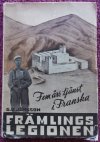
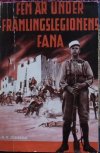 Fem år under främlingslegionens fana. 143 p.
Fem år under främlingslegionens fana. 143 p.
Författarens Förlag, Lund 1939
Fem års tjänst i franska främlingslegionen. 282 p.
Författarens Förlag, Falsterbo 1942, Finja 1959, Vekerum 1975
”Storsvensken” Karlsson
"Big Swede" Karlsson. In the Legion 1910s.
Mentioned in a book by Anna Levertin: »Big Swede» Karlsson, who as private in the Foreign Legion serving officers, »so hard that they can not even burn in hell.» No further information available at present.
Bengt Korch (1922-1995)
In the Legion 1952-1954
Born in Stockholm Restaurant Studies in the USA and South America 1947-50. Journalist, Djursholm. Legionnaire's name: "Steven White" Was in North Africa and Indochina. Deserted in 1954 after the Battle of Dien Bien Phu, after 14 months in Vietnam.
When he in the early 1950s chose to enlist in Legion was the main reason that he sought to make sense of his life after a failed marriage. After a nocturnal conversation with two German legionnaires at a bar in Marseille, where beer after beer was consumed, Korch became more and more convinced that the "Foreign Legion would mean my new start in life"
Book only in Swedish:
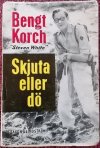 Skjuta eller dö. Med Franska Främlingslegionen i Afrika och Indokina. 192 p.
Skjuta eller dö. Med Franska Främlingslegionen i Afrika och Indokina. 192 p.
Saxon & Lindström 1954
Ivan Lönnberg (1891-1918)
In the Legion 1914-1918
When World War I broke out, he let his emotions speak, and no doubt he enlisted entry in the Foreign Legion, where he distinguished himself as a rap and valiant soldier. He participated in the war until the last year, 1918, when he was killed. Message on Lönnbergs heroic death was received with genuine sorrow in the Swedish colony, who rejoiced in his success and with warm interest followed him during those years of horror.
Little announcement in the newspaper Kalmar 1918-05-18
Swedish fallen on the western front, on the French side. Stockholm, Friday (17/5). According to NDA would the young painter Ivan Lönnberg have fallen on the Western Front, where he participated on the French side as airmen. He was 26 years old.
Allan Mann (1921-2005)
As a volunteer in Narvik in 1940 he was awarded the Foreign Legion 1.bataljon, 13 DBLE, as a scout.
Gösta Moberg (1894-1975)
C. Gustaf (Gösta) Moberg, officer, explorer Legionnaire of Honor 1952
Married in New York in 1946 to Marie-Louise d'Esternaux, who died the same year. What happened?
 He wrote many books and among them: Foreign Legion and its country. This book deals with French Foreign Legion and Moroccan strange country. Includes memories, impressions and experiences from several visits to the Legion's various military units. The studies cover a period of 30 years. It is the author's desire to bring to greater public awareness truth of the squad, which unfortunately is so misunderstood, not least in our country.
He wrote many books and among them: Foreign Legion and its country. This book deals with French Foreign Legion and Moroccan strange country. Includes memories, impressions and experiences from several visits to the Legion's various military units. The studies cover a period of 30 years. It is the author's desire to bring to greater public awareness truth of the squad, which unfortunately is so misunderstood, not least in our country.
Its 3.5-year-long expedition in Africa ended Moberg 1952 in Sidi-bel-Abbes, where he was solemnly received the prestigious award "Legionnaire de I:e Classe Honoraire" a rare award to a person as a non-enrolled in the Foreign Legion.
Elow Nilson (1894-1916)
From Gustavsberg. In the Legion 1910s.
Was killed in the Battle of the Somme.
Book only in Swedish:
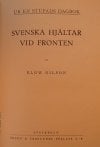
 Ur en stupads dagbok: Svenska hjältar vid fronten. 144 sid.
Ur en stupads dagbok: Svenska hjältar vid fronten. 144 sid.
Åhlén & Åkerlund 1917
(From a diary of a fallen: Swedish heroes on the front lines)
Torsten Nilsson
Born Approx. 1890.
In the Legion 1911-1914?
He describes in his book the conditions during the first half of the 1910s. Nilsson was 21 years old when he enlisted himself. Legionnaire No.11239 first regiment. Deserted, went to a Swedish steamer in Oran and on to Rotterdam. From there by train across Germany and Denmark.
Book in Swedish:
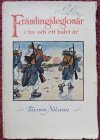 Främlingslegionär i tre och ett halvt år. 127 p.
Främlingslegionär i tre och ett halvt år. 127 p.
Elanders Boktryckeri AB, avd. Förlagsaktiebolaget Västra Sverige, Göteborg 1922
Sture Ronnö (1913-1995)
In the Legion from 1936 to 1941.
Sten Sture Ronnö, born in Linköping 13/8, 1913, in the 1940s, officials in Stockholm. Possibly also as a taxi driver in 1950-60s . Appears to have been regulars employed in the Swedish Army for 4 years before he was recruited to the Legion. Ronné Ronnö No. 66176 was his name in the Legion.
Wrote some books about his time in the Legion:
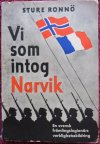
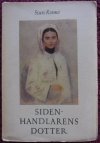 Vi som intog Narvik 1941, A Swedish Foreign Legionnaires' reality depiction.
Vi som intog Narvik 1941, A Swedish Foreign Legionnaires' reality depiction.
Translated into Norwegian and Dutch.
Sidenhandlarens dotter 1945
I skuggan av Dien-Bien-Phu 1955. (Novel)
Curth Samuelsson (1927 -2004)
In the Legion 1955-1960
Curth Samuelson's motives for enlisting has largely to do with love - Christmas 1955 he sat at a bar in Paris and drank Pernod after Pernod
- "I drank to numb my memory, to forget my beautiful home and that sweet girlfriend I once had.
"After a meeting with recruiters decide Samuelsson what the Legion could offer was the best way to forget.
Book only in Swedish:
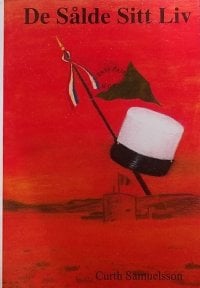 De sålde sitt liv. 266 sidor
De sålde sitt liv. 266 sidor
Lumio förlag & skrivbyrå, 2004. (Very hard to find!)
An exciting and true story of how the author Curth Samuelsson enlisted in the French Foreign Legion in the mid 50s.
A readable book that you do not want to put down until you've reached the end ... how he survived the punishment company and time in Africa, the fellowship of other "voluntary" mercenaries. We follow him for five years until the last day
Henning Sandell (1858-1888)
In the Legion 1887-1888.
Twin brother to Martin Sandell. Died August 12, 1888 in a tropical fever after barely a year in Indochina.
Martin Sandell (1858-1912)
In the Legion 1887-1912.
Died of a heart attack on Dec. 29, 1912 after 25 years in Indochina.
Martin Sandell, the son of a farmer from Blekinge. In the late 1800s, he left the student life in Uppsala, took service as a trustee on a large estate in Finland, but fell in love with the lady,owner of the estate and felt obliged to emigrate. He tried to enlist in the Foreign Legion and ended in 1887 in France's newly created colony Tonkin in current Vietnam.
Book only in Swedish:
Bertil Nelsson (1927-)
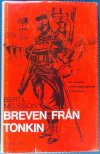 Breven från Tonkin. En svensk främlingslegionär i Vietnam. 251 p.
Breven från Tonkin. En svensk främlingslegionär i Vietnam. 251 p.
Norstedts 1976
(Letters from Tonkin. A Swedish Foreign Legionnaire in Vietnam)
Nils Gustav Ulric von von Schoultz (1807-1838)
Finland-Swede. In the Legion 1831-1832
Born in Kuopio, Finland. The family emigrated to Sweden around 1810. Educated at Karlberg 1821. Belonged since Svea Artillery Regiment. In 1830 he left Sweden and joined the war in Poland against Russia. Captured by the Russians but managed to escape to France in 1831 where he joined the French Foreign Legion, which he deserted from 1832. Got married in Florence and moved back to Sweden. In 1836, he left the family and went to the U.S. and became self-employed. He was executed for his participation in the Canadian insurrection against Britain in 1838.
Gösta Sehler (1893?-xxxx)
In the Legion 1921-1933.
Legionnaire No. 44149, was 12 years in the Legion. 6. Battalion - 1. Regiment. Sergeant 1925
Book only in Swedish:
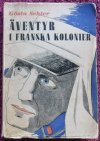 Äventyr i franska kolonier. En svensk i franska främlingslegionen. Häftad 175 sid.
Äventyr i franska kolonier. En svensk i franska främlingslegionen. Häftad 175 sid.
Kooperativa Förbundets Förlag 1946.
Adventures in the French colonies. A Swede in the French Foreign Legion.
Edward Roland Stjernström (1863-1925)
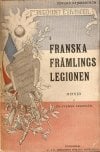
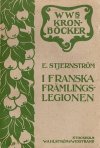 His books: In the French Foreign Legion I-II. Memories of a Swedish legionnaire, 1901-03. They have probably been translated into French and German, but I can not find those translations online.
His books: In the French Foreign Legion I-II. Memories of a Swedish legionnaire, 1901-03. They have probably been translated into French and German, but I can not find those translations online.
Roland Strandberg (1964-)
In the legion a short period probably around 1980
Book only in Swedish:
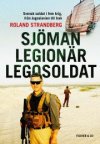 SJÖMAN - LEGIONÄR - LEGOSOLDAT. Svensk soldat i fem krig, från Jugoslavien till Irak.
SJÖMAN - LEGIONÄR - LEGOSOLDAT. Svensk soldat i fem krig, från Jugoslavien till Irak.
Svenskt militärhistoriskt bibliotek 2016
Lind & Co, Fischer & Co 2017
Erik Söderqvist (XXXX-1929)
In the Legion XXXX-1929.
Legions companion to Widar Swahn. Got paratyphoid in 1929 in Indochina and died after repatriation in Algeria.
Book only in Swedish:
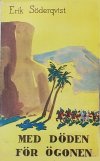 Med döden för ögonen. En svensks upplevelser i franska främlingslegionen. 188 sid. Hökerbergs 1932.
Med döden för ögonen. En svensks upplevelser i franska främlingslegionen. 188 sid. Hökerbergs 1932.
Widar Swahn (22/7 1897-1/8 1975)
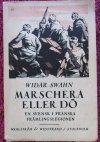
 Marschera eller dö. En svensk i franska främlingslegionen.221 p.
Marschera eller dö. En svensk i franska främlingslegionen.221 p. Wahlström & Widstrand 1928
Med döden för ögonen. En svensks upplevelser i franska främlingslegionen. 152 p.
A.-B. Lindqvists Förlag. 1942
Assar Tano (1908-2004)
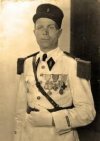 Enlisted simultaneously with Gösta V. Jönsson and Per Tycko Granberg
Enlisted simultaneously with Gösta V. Jönsson and Per Tycko Granberg He revealed their plans for his peers, Pelle Granberg and "Goda" (See Gösta Valdemar Jönsson). Well-dressed and determined to enlist they stepped into the recruiting office in Lille and after conversations and many warnings, they were adopted. When the contract was signed the recruitment Major said: "Bonne chance!" Good Luck! Civilian clothes were sold at auction and through Paris continued the journey to Algeria, where they could establish that the African lices loved "tornedalian" blood. But what did it? The boys were soldiers in the world's toughest army, the Foreign Legion; just the word evokes feelings of adventure, battles, marches and discipline.
16 years later, World War II ended. Also Assars time in the world's toughest army.
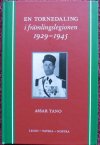 En Tornedaling i främlingslegionen 1929-1945. 2010
En Tornedaling i främlingslegionen 1929-1945. 2010
Ivor Thord-Gray / Thord Ivar Hallström (1878-1964)
Born in Stockholm. Died in Florida. Have found information that he fought for the Legion of Tonkin in 1909 but have not had it confirmed.It is said that it was he who inspired Edgar Rice Burroughs, the story of Tarzan.
Erik Rusén (1864-1935)
He was born in Linköping and died in Paris. After completing a degree in Uppsala Court of Appeals in 1889, he worked as a clerk in Nyköping before he enlisted in 1895 as a volunteer in the French army (Foreign Legion) with service in Algeria, in Tonkin and in Madagascar.
Bror Ture Thulstrup -Thun (1848-1930)
From the Nordisk familjebok / Uggleupplagan 1919.
Artist, born April 5, 1848 in Stockholm, in 1865 became lieutenant of the Svea Artillery Regiment, was employed in 1868 in the French Army, served in the Foreign Legion in Algeria and advanced during the Franco-German War to Captain (1871) and fought against the Communards of Versailles.
Tamas Weber (1942 -)
In the legion 1958-1963
Weber is one of the most famous Swedes who served in the French Foreign Legion on France's side in Algeria. Wounded in 1962 (Algerian War of Independence from 1954 to 1962)
Tamas Weber was born in Hungary in 1942 but for many years resident in Sweden. His military skills are well known in the Swedish defense. He is a former international player in karate and the highest graded karate champion outside Japan.
Books in Swedish and English:
Tamas Weber/Thomas Nilsson
The Song of the Desert: A Legionary's Life Story. 117 sid.
T. Weber, 1995
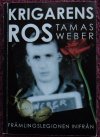
 Krigarens ros: Främlingslegionen från insidan. Sanshin 2001
Krigarens ros: Främlingslegionen från insidan. Sanshin 2001
The Warrior's Rose. Cedar Hill Publishing 2004
Carl Georg Theodore Westée (1798-1865)
In the legion 1838-1846.
After individual home schooling was W. included W., fifteen years old, as a volunteer at the Svea Artillery Regiment and accompanied the same on the campaign to Norway in 1814. The following year he was appointed as second lieutenant in Södermanlands regiment and was ordained to adjutant of the president in the war college but left by economic reasons, after some time the Fatherland and was employed in 1820 as a common soldier at Hohenloheska Legion in Corsica. Then here he was promoted to second lieutenant in 1823 and to lieutenant in 1830, he was ordered to accompany the expedition under Marshal Maison went to Greece. Appointed, after having been naturalized french, 1838 to battalion commander at »légion d'étranger» in Africa. It would become too long-winded here to enumerate all of the hit compounds and skirmishes, in which he had under his' residence in Algiers and Oran 1838-46 attended. After Marshal Bugeauds expedition from Mostaganem to Blida in 1842 suggested he to lieutenant-colonel and was transferred in 1844 in this grade to 36th Line regiment, then just come over to Africa. After eight years of military service, which he had in five at each other following winters not been in bed, not even in the house, he returned to France in 1846 and was appointed there in 1848 to colonel of the 45th line regiment. He requested in February 1854 his discharge, made a visit to the Fatherland in 1856, resided in Nizza 1861-64, settled finally in Montpellier and died there unmarried June 21, 1865.
Karl Einar Wide
Difficult to find information about Wide, but probably not in the Legion
Book in Swedish:
 Förlorade söner. Äventyr i främlingslegionen. 215 p.
Förlorade söner. Äventyr i främlingslegionen. 215 p.
Wahlström & Widstrand 1933.
(Lost sons. Adventures in the Foreign Legion)
DANISH LEGIONNAIRES
Anton (1928-2001)
In the legion 1948-1952
ANTON - an anonymous Danish "warrior" and foreign legionnaire in Vietnam in the cruel war against the Viet Minh - the North Vietnamese army. He survives as the only one in his company. Anton survive - unlike many of the comrades - and he tells his story to journalist gang Sjak Svendstorp.
Book in Danish:
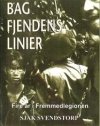
Sjak Svendstorp
Bag fjendens linier: fire år i fremmedlegionen. 202 sid.
MeMeMedia 2002
Ole Baltzersen =
Christian Ebbesen (Pseudonym)
Books in Danish:
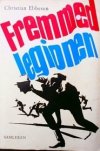
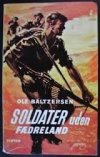 Ole Baltzersen
Ole Baltzersen
Soldater uden fædreland. 122 p.
Vinten 1966.
About the Foreign Legion during the war in Algeria.
Christian Ebbesen, pseudonym for Ole Baltzersen
Fremmedlegionen - den spændende og sandfærdige beretning om verdens skrappeste kampenhed. 185 p.
Samleren 1976
A Danish legionnaire talks about Legion's history and traditions.
Jan Peter Brettschneider (1966 -)
In the legion?
Jan Peter Brettschneider left Denmark and got a new identity in the Foreign Legion. But after a year in an extremely violent and callous soldiers world he feared for his wits and deserted
Book in Danish:
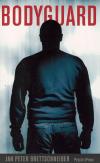
Jan Peter Brett Schneider / Jens Vilstrup
Bodyguard - about the author's life in the Foreign Legion and as a bodyguard for the pop group Aqua.
People's Press 2003
Daniel Bruun (1856-1931)
In the legion 1881-1882.
Officer, cultural writer and archaeologist. Bruun attended in his youth as a volunteer in the Foreign Legion in Algiers Campaign 1881-82 and showed great bravery. As a lieutenant, he was in the years 1886-94 district leader Estrup "Blaa Gendarmerikorps" and during World War I captain in the security force.
Books in Danish:
Algier og Sahara. Billeder fra nomade- og krigerlivet. 377 sid. Med 2 kart.
Kjøbenhavn Gyldendal, 1893.
Algier og Sahara. Billeder fra nomade- og krigerlivet. 420 sid.
British Library, Historical Print Editions 2011
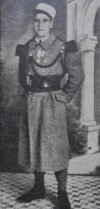 Svend R. Christensen (1909-1991)
Svend R. Christensen (1909-1991)
In the Legion: July 22, 1936 to 1941.
Danish journalist. Born in Fredericia. Richard Sim (pseudonym)
Books in Danish:
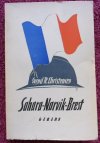 Sahara-Narvik-Brest.
Sahara-Narvik-Brest.
København Westermann 1942.
Translated into Swedish by Nils Jacobsson. 247 p.
Gebers 1942
Also translated into Dutch by Mrs. M. De Gelder-Jansen, with fine illustrations by Alfred Mazure. Ad.M.C. Stok undated (50 years), Den Haag.
 Hvilken smuk morgen: noveller fra fremmedlegionen. 128 p.
Hvilken smuk morgen: noveller fra fremmedlegionen. 128 p.
Ørnen 1991
Aage Eberhardt Christoffersen (1902-1976)
In the Legion 1920
From Soren Bøgvad Kretzschmer genealogy website:
He joined the French Foreign Legion in 1920 because his father did not care about him and Aage also lacked money and a job and he became a very good marksman in the Legions sharpshooter-regiment. But after an incredible hard and psychic life as legionnaire after 6 months of military earn profit of a fortress in Morocco in North Africa, he deserted one night along two Germans. He was wounded by a gunshot in his leg during the escape, but got back to Denmark and saved his leg, thanks to his sister Elvira and a nurse.
Wagn S. Dantoft (Wagn Sigfred Dybdahl Dantoft)
In legion 1950s
Eight years of service in the Foreign Legion, fighting in Indochina and Algeria.
Book in Danish:
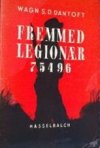 Fremmedlegionær 75496. 179 p.
Fremmedlegionær 75496. 179 p.
Hasselbalch 1961
Adolph Wilhelm Dinesen
![]() 1807-1876. Born on Kragerup
1807-1876. Born on Kragerup
I legionen 1837
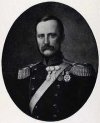 Fra Wikipedia.
Fra Wikipedia.![]()
Books only in Danish: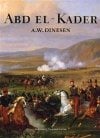
Abd-el-kader og Forholdene mellem Franskmænd og Arabere i det nordlige Afrika.
C.A. Reitzel, København 1840.
Ny udgave: Forlaget Vandkunsten, København 2006
Carl Engholm (1913-2003)
In the legion 1931
Anyway it was not exactly enthusiastic parents showed as the only 17-year-old Carl one day cheerfully announced that now he went to France as a foreign legionnaire. But he did receive permission. In recruiting office in Marseille lied Carl himself a year older and were enrolled for 5 years.
-I was legionnaire for 9 months before they found out that I was not old enough. But then it was too late. At the time I was 18 years of age. The manager gave me however the choice either to go home or continue to term. I decided to go home and take high school diploma. "After school he started a career in the Army, where he became an officer in 1937. In the years of occupation was Carl Engholm from 1943 active in the illegal General Staff Intelligence Section. He operated in Denmark and Sweden and had to repeatedly cross Øresund. In 1944 he was caught by the Gestapo and sent to Neuengamme concentration camp. In 1945 he was brought back by the "white buses" and he got after the war upscale duties abroad.
Book in Danish: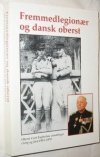
Fremmedlegionær og dansk oberst - Carl Engholms erindringer i krig og fred 1913-1979. 267 p.
Dansk Historisk Håndbogsforlag 1996
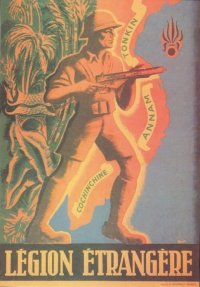 Arvid Hansen
Arvid Hansen
I legionen 1948-1956. Indokina.
Books in Danish:
Vietnams blodige maske. 128 p.
Ampel, 1970
Legionæren. 141 p.
Bogan 1978
<Poster Recruiting for Indochina
Bruno Søndberg Hansen (1931- 2014)
In the legion 1953-1958. Corporal. Alger, Indochina.
Bruno was as a seaman left behind in Rouen 1953. His five years in the Foreign Legion began in Paris, across Marseilles to Morocco and Algeria. On to French Indochina where he was wounded by a grenade. After the Armistice back to Algeria where he immediately came back into the fire. Then he came on corporal school, and despite strong calls after the five years to renew the contract with the Foreign Legion, he chose to step out and live a more peaceful life.
Jack Hansen
In the Legion in the 1950s
A Danish Legionnaire's experiences in 1950s Indochina. Seems to have been a volunteer in the Waffen SS during World War II, as his SS tattoo examined when he enlisted to the Legion in the French zone of West Germany. (Difficult to find information about, perhaps a pseudonym)
Book in Danish:
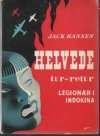
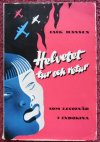 Helvede tur-retur. Legionær i Indokina. 176 p.
Helvede tur-retur. Legionær i Indokina. 176 p.
Vendelkær 1954.
Transated into Swedish:
Helvetet tur och retur. Som legionär i Indokina. 200 p.
Gothia 1955
Jakob Birger Hansen
I legionen 2001. Deserted after seven months.
Got leave from the armed forces and joined the Foreign Legion the south of France. Here he enjoyed the challenges, hardships and the military training and quickly won the respect of his person. But he also found out that he could not live for five years without freedom and the right to take independent initiatives. After seven months of service, he chose therefore to escape one night with a friend from the paratroop bastion in Corsica.
Book in Danish: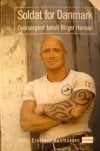
Peter Ernstved Rasmussen
Soldat for Danmark - Oversergent Jakob Birger Hansen. 239 p.
Aschehoug 2007
Kent Hansen (1973-)
In the legion 1993-95. Deserted.
Book in Danish:
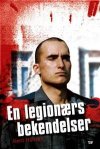 En legionærs bekendelser. 266 p.
En legionærs bekendelser. 266 p.
TV2 2008.
The Dane Kent Hansen talks about his experiences the Foreign Legion, which is marked by violence, humiliation, slavish obedience, drugs and alcohol.
Gotfred Anton Hoffmann (Godefroy Antoine Hoffmann)
Enlisted in the legion in 1914
E-book in Danish
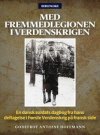 Med Fremmedlegionen i Verdenskrigen. En dansk soldats dagbog fra hans deltagelse i Förste Verdenskrig på fransk side. 64 sid.
Med Fremmedlegionen i Verdenskrigen. En dansk soldats dagbog fra hans deltagelse i Förste Verdenskrig på fransk side. 64 sid.
ArtPeople/Berlingske 2014
Peter Hovmand (1974-)
In the legion1992.
Peter Hovmand volunteered at age 18 for the Foreign Legion, where he completed recruit training as the third best in his team and later joined the paratroopers.
Books in Danish:
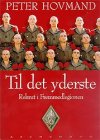
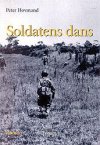 Til det yderste - rekrut i Fremmedlegionen. 219 p.
Til det yderste - rekrut i Fremmedlegionen. 219 p.
Aschehoug 1998
Soldatens dans
Filosofisk roman. 144 sid.
Forum 2003
Arne Jensen
In the legion 1940s
Training for legionnaire and the subsequent battles in North Africa and Italy in 1942-43. In 1944, went the legion to France, where it participates in the fierce battles to the country's liberation and the subsequent occupation of Germany. After the war ended, Arne Jensen and the legion stationed in Austria, where he participates in the hunt for the missing war criminals.
Book in Danish:
Landsknægt i Légion Étrangère - Fem år i Fremmedlegionen 486 p.
Ådalen. 2006
Kai Kiær-Andersen (1886-1984)
In the Legion 1911-1920
The author died in 1984 age of 98 became in 1911, an officer in the French Foreign Legion and participated with it in countless fierce battles
Book in Danish:
![]() En dansk fremmedlegionærs oplevelser 1911-1920. 300 p.
En dansk fremmedlegionærs oplevelser 1911-1920. 300 p.
Edited and annotated by John Nielsen and Kjeld Birket-Smith.
Odense Universitetsforl1985
Brian Lange (1964 -)
In the Legion 1988-2003
15 years in the Foreign Legion with numerous missions around the world.
Book in Danish:
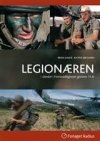 Legionæren-dansker i Fremmedlegionen gennem 15 år 224 p.
Legionæren-dansker i Fremmedlegionen gennem 15 år 224 p.
Radius 2008
Chris Madsen (1851-1944)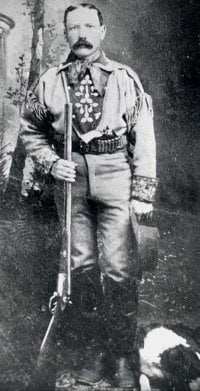
In Legion 1860-70s
He was - along with his father - courier in the war in 1864, both at Dannevirke and Dybboel, and let himself after the war enlisted in the army as a trainee.
But the urge to travel sent him to the Foreign Legion, and he fought both in Algiers and in the Franco-Prussian War and was wounded at the Battle of Sedan. He left the Foreign Legion when the contract expires.
Christen Madsen arrived in America 17 January 1876 aboard the S / S Dakota. Four days after arriving he enrolled in the 5th U.S. Cavalry
For 15 years he fought in the cavalry regiment against the Indians, and the subsequent 26 years, he was a feared U.S. marshal or deputy marshal, who had succeeded in chasing and sometimes tame big criminals such as the Dalton brothers.
Book in Danish:
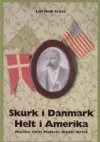 Leif Rudi Ernst
Leif Rudi Ernst
Skurk i Danmark. Helt i Amerika, Marshal Chris Madsens skjulte fortid.
Eget forlag v/ Poul Straarup 2003
There are many English books about his time in America.
Carl Louis Mogensen (1895-1946)
In the Legion 1920-1925.
He joined the Foreign Legion on Nov. 11, 1920. A girl in Randers had failed him. She raised her engagement shortly before they should be married. In 1925 he was named "Knight of Ouissam Alaouit Cherifien" as his regiment joined other legionnaires to rescue, that was in battle with Sultan Abd-el-Crimean forces. This period he spoke very happy about, while his many lady acquaintances and family relationships were known only to a very few. One of Carl Mogensen friends in the Foreign Legion was the Danish Prince Aage.
Anders Jøker Nissen og Peter H. Andersen
In the legion 1991-1996
Book in Danish:
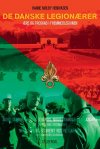 Hanne Mølby Henriksen
Hanne Mølby Henriksen
De danske legionærer. Ære og troskab i Fremmedlegionen.
Gyldendal 2013
Ove Carl Wilhelm Møller Frohn (1892-1956)
In the Legion 1910s
Young Danish mechanic, who under false pretenses tempted to enlist in the infamous Foreign Legion in Morocco. He tries to escape, fail and are sent to "hell beyond the sea", French Guiana, where he spent 8 years in captivity.
Book in Danish:
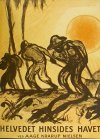 Helvedet hinsides havet,
Helvedet hinsides havet,
Gyldendal 1933
Translated into Swedish:
Helvetet bortom havet. 312 p.
Bonniers 1933
Ole Nielsen
In the Legion 1951-1954
He went to sea at age 15 in 1948. Three years later, he joined the Foreign Legion at a police station in Paris, and after a short training as a paratrooper, he was sent to Indochina to fight the Viet Minh insurgency. It became 3 years as a soldier in Indochina. Casualties were great - seven out of ten of his fellow soldiers never returned home.
Prince Aage of Denmark (1887-1940)
In the legion 1922-1940
He was the great-great grandson of French King Louis-Philippe (founder of the French Foreign Legion). Eldest son of Prince Valdemar and Princess Marie Orléans. Devoted himself to officer's career and became in 1919 the captain of the life guards Found the service in Denmark monotonous and entered 1922 with the French Foreign Legion as captain. Participate with great bravery in the fighting in Morocco and was often mentioned in the French communiqués Underwent two-year French general staff of school and became the battalion commander and then regimental commander in Morocco. Has portrayed his experiences in two books, which testify sympathetically about his personality and the most profound life experience he gained as a soldier.
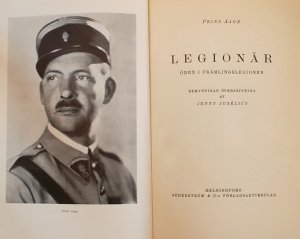 Books in Danish, Swedish, English and French:
Books in Danish, Swedish, English and French:
Tre aars kampe i fremmedlegionen. 104 p.
Gyldendalske Boghandel - Nordisk Forlag 1927.
A royal adventurer in the Foreign Legion.
Doubleday, Page & Co 1927
Legionær - Skæbner i Fremmedlegionen 148 p.
Berlingske Forlag 1936.
Legionär. Öden i främlingslegionen. 174 p.
Wahlström & Widstrand 1937
Mes Souvenirs de la légion étrangerè. 216 p.
PAYOT, 1936.
Le Régiment des nuits rouges. 174 p.
Paris, les presses de la Cité, 1945.
NORWEGIAN LEGIONNAIRES:
Anders Abel
![]()
Google Översätt
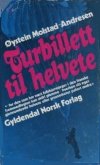 Books:
Books:
Øystein Molstad-Andresen (1935-)
Turbillet til helvete.
Gyldendal 1974
For those who have been a paratrooper in the French Foreign Legion can never forget-either their own lived through hell or horrors inflicted on others.
Henry A. Angell (1861-1922)
Norwegian. In the Legion in 1918.
From the Nordisk familjebok / Uggleupplagan 1922
Angell, Henry August, Norwegian military, writer and sportsman. Officer with the Infantry in 1882, he was promoted to colonel and regimental commander in 1911. Balkans 1912 (as a war correspondent) and 1914 (to study battlefields). During World War II he was a member of the French Foreign Legion and participated with great distinction in its operations (1918). Hot defencist and outstanding athlete, he seemed in speaking and writing for the making of a patriotic and physically strong genus.
Books in Norwegian:
For Frankrigs ret og ære. Fra den franske front. 139 p.
Kristiania (1918)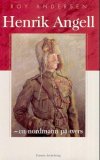
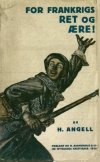 Frankrikes søner i vaapn og strid. Nynorsk utgivning. 139 p.
Frankrikes søner i vaapn og strid. Nynorsk utgivning. 139 p.
Aschehoug 1918.
Nordmænd i Fremmedlegionen. Vol. 11, p. 304-306.
Nordmanns-forbundets tidsskrift 1914-18.
Roy Andersen
Henrik Angell - en nordmann på tvers. 249 p.
Aschehoug og Forum 2000
Bernt Balchen (1899-1973)
In the legion 1918
1917-1918 he went to forest school, but enlisted immediately afterwards to the French Foreign Legion. However, he was discharged from there in the fall to undergo military conscription in Norway, and early winter of 1918, he participated as a volunteer during the Civil War in Finland. Here he was wounded during a cavalry attack.
Books in English and Norwegian:
 Come North With Me. An Autobiography, New York 1958 (Published in Norwegian: Kom nord med meg, 1958)
Come North With Me. An Autobiography, New York 1958 (Published in Norwegian: Kom nord med meg, 1958)
Hjalmar Eidsaa (1923?-xxxx)
In the legion 1951-1953?
As fourteen year old, he went to sea. Worked in the Merchant Navy during the war, the ship was torpedoed by the Germans and he was interned in the concentration camp Dachau. Sign off the Panamanian registered vessel "Travelstar" in Marseille in 1953 got into a fight with a bunch of "harbor rats" who tried to rob him and he thought he killed one of them. Enlisted to the Legion. No. 84487 Eidsaa. Educated in Algeria and was sent to Indochina. During the 14 day furlough in Saigon he deserted. Hiding on a Norwegian ship bound for Freemantle in Australia. During his time in North Africa, he was with fellow Swede Fred Eriksen, who deserted with Finn Ensio Tiira with a raft outside Singapore.

 Wolfgang Fischer
Wolfgang Fischer
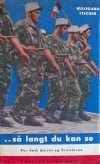 Books:
Books:
...så langt du kan se
For død, djevel og Tricoloren
Nasionalforlaget 1960
Google Översätt
Ole A. Dovre
Norwegian
Book in Norwegian:
Det hendte i Marokko : en nordmanns opplevelser i fremmedlegionen 78 p.
Oslo : Hȧndverkstrykkeriet, 1945.
Arvid Gulbæk Obolensky (1931-)
Norwegian. In the legion 1946-1954
Gulbæk enlisted in 1946 under the name Martin Emil Wagner as 15 years old seasick rookie, survived the Legion's defeat at Dien Bien Phu, and was released from North Vietnamese prisoner of war in 1954.
Book in Norwegian:
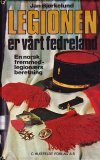 Jan Bjørkelund
Jan Bjørkelund
Legionen er vårt fedreland. En norsk fremmedlegionærs beretning. Biografi. 398 p.
Huitfeldt 1981
Henrik Hovland
Text from: Univeristas:
Google Översätt
Olav Jøntvedt (1921-1980)
Norwegian artist. In the legion 1951-1961.
Jøntvedt, joined the Norwegian Legion in 1941, and got as Oberjunker received several awards, including the Iron Cross for the effort, before he was captured. He was treason convicted in Porsgrunn.
In 1951 he enlisted for the Foreign Legion, where he participated in the war in Tunisia, Algeria and Vietnam before he was discharged in 1961. He was employed as a draftsman in the newspaper Kepi blanc. Jøntvedt was in service in Indochina for many years and ended up in captivity in Hanoi. After release he served in Algeria.
Øystein Paulsen
Norwegian. In the legion 1984-1989
Book in Norwegian:
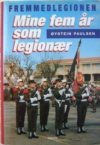 Fremmedlegionen. Mine fem år som legionær. 304 sid. Orion 1996
Fremmedlegionen. Mine fem år som legionær. 304 sid. Orion 1996
Info from the publisher:
Øystein Paulsen Foreign Legion My five years as a legionnaire The French Foreign Legion, mystified, romanticized, condemned and misunderstood, legends and stories about the legion are many. Just the name evokes for most up images of camels and forgot, lost men struggling under a merciless sun in the desert. But the reality hidden behind the myths? What causes people to go there, and what do they do? This book tells the true story of a Norwegian boy who enlisted in the mid 80s.
OTHERS:
Friedrich Glauser (1896-1938)
Swiss. In legion 1921-1923.
Book in Swedish:

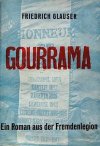 Feberkurva.
Feberkurva.
Ersatz bokförlag 2009 (Die Fieberkurve, Zürich 1938)
Some of the plot is based in the Foreign Legion in Morocco.
About the time in the Legion, he wrote the book:
Gourrama. Ein Roman aus der Fremdenlegion, Zurich 1940.
Not available in Swedish translation.
Hans Habe (1911-1977)
Pseudonym Janos Békessy, Hungarian / Austrian / American
In the Legion 1939-40
Habe enrolled in 1939 as a volunteer in the French army, a special squad of the French Foreign Legion, where they did not have to enlist for five years, but only as long as the war lasted. Imprisoned by the Germans and interned in Dieuze Dulag camp but was liberated by French friends and fled across Lisbon to the U.S., where he became an American citizen.
Book:
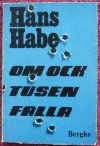 Ob Tausend fallen (1941, A Thousand Shall Fall, about his war experiences in the French Foreign Legion) and in swedish:
Ob Tausend fallen (1941, A Thousand Shall Fall, about his war experiences in the French Foreign Legion) and in swedish:
Om ock tusen falla 1941,
(Historians have used this portrait of the French defeat in 1940 as a true source)
John Harvey (1900 -?)
Welshman from Cardiff. In the Legion: 1925 -?
He deserted but was captured and sentenced to eight years in prison, but was pardoned after 18 months to return to his regiment. When Harvey returned to the UK he began to write. His real name, David Harvey John Jones, he refrained from using and signed his "Legion-name" (John Harvey) over 10 years.
Books:
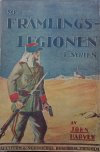 In parallel with the Foreign Legion in Syria, in swedish: Med främlingslegionen i Syrien, Ahlström & Nordberg 1931, he published no less than 19 works under the alias Ex-Legionnaire 1384. With titles like The Arab Patrol (Arabpatrullen Skoglunds Förlag. 1936), The Devil's, all with the Foreign Legion as a theme. Unfortunately, all these fictional works have been out of print since World War II.
In parallel with the Foreign Legion in Syria, in swedish: Med främlingslegionen i Syrien, Ahlström & Nordberg 1931, he published no less than 19 works under the alias Ex-Legionnaire 1384. With titles like The Arab Patrol (Arabpatrullen Skoglunds Förlag. 1936), The Devil's, all with the Foreign Legion as a theme. Unfortunately, all these fictional works have been out of print since World War II.
Felix Jungell (1869-1930)
Finland Swede. In the Legion in Algier 1996-98 and Madagascar 1899-1901, Second Madagascar expedition?
Born in Vaasa, Finland, theater studies 1892-94. Then became telegraph officials, among others in Madagascar, subsequently guide for Finland-Swedish refugees in Stockholm. Return in Finnish telegraph service in 1917. Died in Helsinki
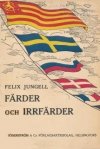 Book in Swedish:
Book in Swedish:
Färder och irrfärder. Minnen från ett äfventyrarlif. 156 sid. Helsingfors 1909.
Maximilian Kirsch (1893-1963)
German. In the legion: 1914-1915
He traveled home from Cameroon to attend the First World War on German side. Come to France and enlisted in the Foreign Legion On the French ground he makes unsuccessful attempts to escape to Spain and Switzerland, and ultimately to the French front, where he finally after a particularly daring escape takes over to the German side during the Battle of Champagne in January 1915. Then follows, hearings faced with different officers, mistrust of his outlandish stories about how he had come from Cameroon to the West Front. Eleven shot going through his clothes. But only minor injuries. Lucky from start to finish! A few weeks later dressed legionary Kirsch, the German Navy's blue uniforms and received the Iron Cross.
Bertel Kurtén
Finn (Finland-Swede) In the Legion 1922-1927 Stationed in Algeria and Morocco
In 1928, wrote the young Finland-Swede Bertel Kurtén these lines. They reflect an earlier mood in him: Adventure - see all that I have desired! I hungered for military exploits, following the wild west romantic adventure, I hungered for seeing new countries and new people. I wanted to embark on the first best ship and sail to the Caribbean might be, perhaps China, perhaps Oceania - where I would perhaps find satisfaction in my youthful and invincible love of adventure. With hindsight subside Kurtens words hollow. We know that Kurten never came to the Caribbean or South Pacific Islands, even to China. He instead settle for North Africa and a five-year contract with the French Foreign Legion - an adventure so once had cost him his life, and he bitterly regretted because his expectations so sharply clashed with the reality that the Foreign Legion was. "
Frederic Martyn
Books:
From a swedish book from 1927: Content, among other things a chapter: "Franska främlingslegionen" by F. Martyn
Book in English by Frederic Martyn: Life in the Legion the Experiences of a British Volunteer in the French Foreign Legion in the Late 19th Century. 2011. First published in 1911
Erwin Rosen (1876-1923)
His real name was Erwin Carlé, German / American. In the legion 1905 to 1906. Deserted.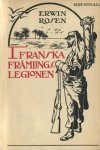
Books in Swedish:
I franska främlingslegionen. Minnen och intryck. 1915. In der Fremdenlegion Erinnerungen und Eindrücke (1909). In the Foreign Legion (1910)
Arthur Rosenhem (1918-1991)
Austrian
Book only in Swedish:
Arturs dokument. En autentisk roman. 144 p.
Kunskapsföretaget 1995
Arthur is 20 years old when the story begins in 1938. He is a jew by birth. At his home in Vienna, he is forced to hurriedly take leave of his family. Now begins the frantic panic of Nazism. Escape to Switzerland, France and the Foreign Legion, North Africa and returned to France, where he stated, was captured and deported to Auschwitz. True story of escape, captivity, love and evil in Europe 1938-1945.
Susan Travers (1909-2003)
In the legion (1941) 1945-1947
Book in Swedish:
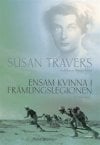 Ensam kvinna i främlingslegionen. En sann historia. 280 p.
Ensam kvinna i främlingslegionen. En sann historia. 280 p.
Forum 2000
Tomorrow to Be Brave: A Memoir of the Only Woman Ever to Serve in the French Foreign Legion.
Bantam Press, London, 2000
Susan Travers talks about her varied life. After a strict upbringing in the upper-class environment in England and several years at boarding school, she lived in luxury on the French Riviera in the 1920's. When World War II broke out, she sought employment as a nurse and an ambulance driver in the French Foreign Legion. She experienced the Battle of Bir Hacheim and adopted after the war as the first and only woman in the Legion.
Percival Christopher Wren (1875 - 1941)
Wren was a very secretive man, and his membership in the Legion has never been confirmed. It is more likely that he encountered legionnaires during his extensive travels in Algeria and Morocco, and skillfully blended their stories with his own memories of the military. While his fictional stories about life before 1914 in the Foreign Legion is highly romanticized, his details of Legion uniforms, training, equipment generally correct. However, this may simply reflect careful research on his part.
Books in Swedish:
BEAU GESTE eller "Blå vattnets" mystiska försvinnande. 367 p.
Stockholm, Bonniers, 1926.
Sir Montagues frestelseut. (The wages of virtue.) 339 p.
Wahlström & Widstrand 1926.
Review of both books:
Biblioteksbladet 1927/171:
Quite entertaining recreational literature. The genre's usual ingredients: the rather incredible events and the hero's absolutely ridiculous self-sacrifice and fortitude, whatsoever it naive in both fable as psychology, missing of course not. But the whole thing is told with verve and a certain beguiling boyishness. The images the author leaves of life in the French Foreign Legion, the event in both novels is largely played out, seem at least authentic. B. Å
 Ökenfortets hemligheter. Öden i främlingslegionen. 352 p.
Ökenfortets hemligheter. Öden i främlingslegionen. 352 p.
Illustrated with images from Paramount's great movie "Beau Geste," silent film from 1926, directed by Herbert Brenon.
Allhem 1937
Svenskar-Utland-Utland2-Mer-Artiklar-Historik-Fiktion+Film-Tidskrifter-Kuriosa-Bibliografier-Bibliografier2-E-post/Gästbok

